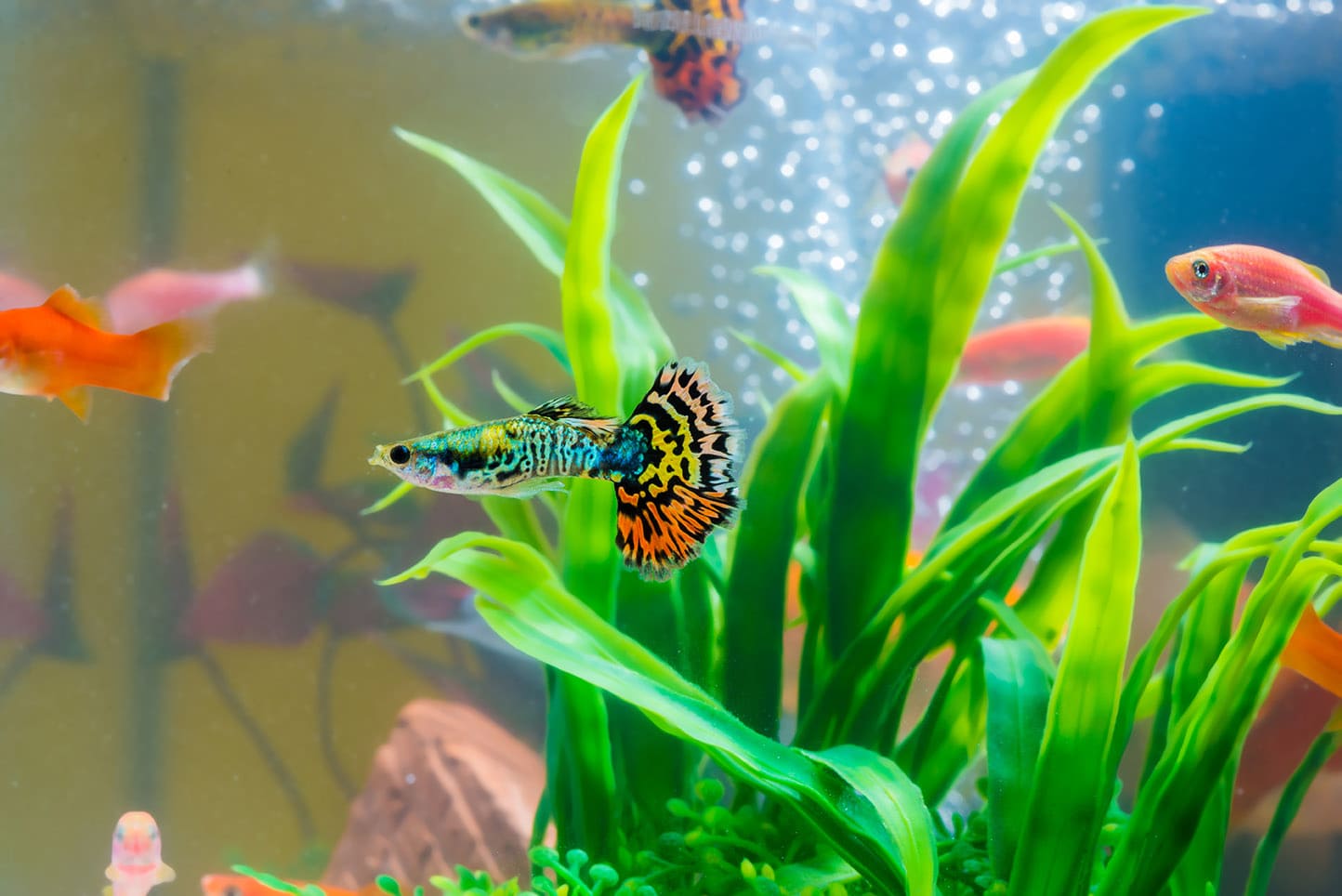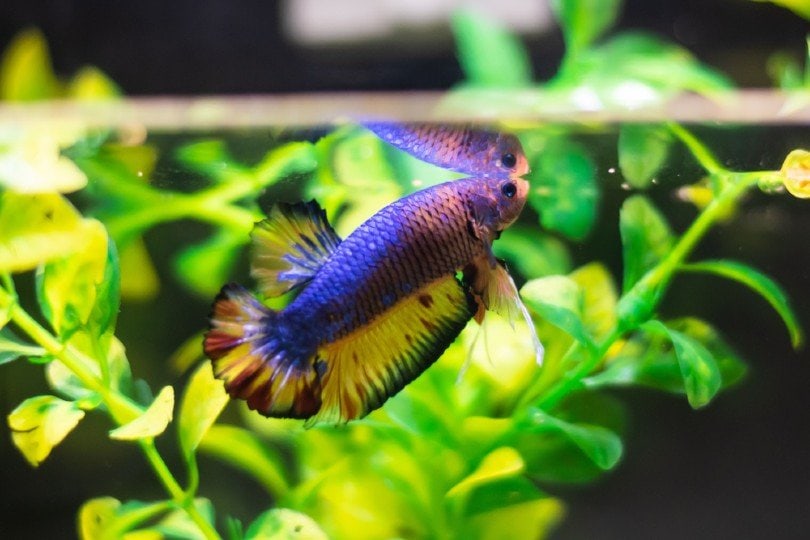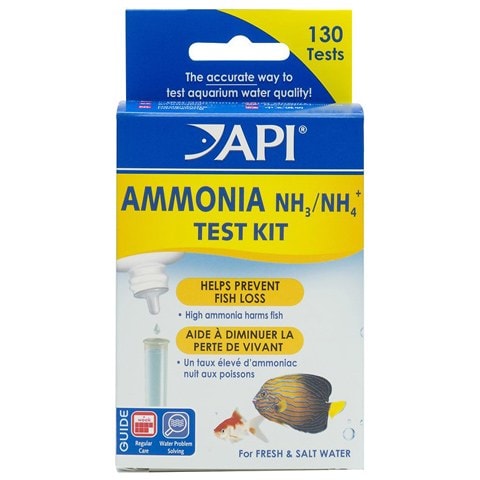

Have you ever forgotten to empty out the cat’s litter box for a few days, and when you finally start sifting through the litter, you’re slapped in the face with the distinctive smell of ammonia? If you’ve ever smelled ammonia, it’s an unpleasant smell you don’t forget. Breathing too much ammonia in can cause irritation and damage to your lungs and airway, and it can cause irritation on the skin as well. Well, did you realize that ammonia is excreted by your goldfish and can not only build up in the tank, but endanger their lives? Here are the things you should know about goldfish and ammonia.

Where Does Ammonia Come From?
Ammonia is a product of metabolic processes within the body that is excreted through the urinary tract in many animals. Goldfish produce ammonia but their urinary tract functions differently than those of mammals. Ammonia that has processed through the kidneys is excreted through a urinary pore, which is similar to a urethra. Ammonia produced by respiration and other metabolic processes is excreted through the gills. Regardless of where the ammonia comes from, it begins to build up in your tank. Goldfish are very dirty fish that produce a heavy bioload, which means they excrete large amounts of ammonia.

Preventing Ammonia Buildup
So, what do you do about ammonia in your tank? There are chemical additives you can use in your aquarium that help neutralize ammonia and convert it to a less toxic form. However, if your tank is properly cycled and has adequate filtration, you should not be seeing ammonia building up. Routinely check your ammonia levels within your tank with a reliable test kit. A cycled tank should have an ammonia level of 0ppm at all times. If you begin to see ammonia levels rise, then something has happened to your tank’s cycle and your beneficial bacteria colonies have been negatively impacted.
Beneficial bacteria live on surfaces like filter media and substrate, so if you’ve recently changed your filtration system, filter media, substrate, or other high surface area items within your tank, then you may have damaged your tank’s cycle. Recolonizing the beneficial bacteria and neutralizing the ammonia will help you get your tank back on track.

Ammonia Poisoning
Ammonia poisoning is what occurs when your fish are exposed to high levels of ammonia or experience long term ammonia exposure. Common causes of ammonia poisoning are adding fish to an uncycled tank, a crashed tank cycle, keeping an overstocked tank without adequate filtration, an increase in the water’s pH, and long-term exposure to poor water conditions, like in a feeder fish tank.
Many fish that are recovering from ammonia poisoning will begin to develop black patches on the scales and fins. If you notice new black patches on your fish, check your ammonia levels. Black patches can develop as the body attempts to heal from ammonia burns, even if the ammonia levels are still elevated. Black patches do not mean the ammonia levels are back down to zero.
Ammonia poisoning can lead to the loss of scales, burns on the skin, and the loss of fins or fin rot. Scales and fins are not guaranteed to regrow, regardless of what you do. Other symptoms of ammonia poisoning include fin clamping, lethargy, inappetence, erratic swimming, gasping, air gulping, and sitting on the bottom of the tank. If you see your fish exhibiting any of these symptoms, check all of your water parameters to rule out ammonia and other toxin buildup. Aquarium salt baths and products that help replenish the slime coat can all be used to help your goldfish heal from ammonia poisoning, in conjunction with eliminating the ammonia in the water.

In Conclusion
Ammonia is one of the most common killers of goldfish, especially in new, inexperienced keepers. Elevated ammonia levels are part of “new tank syndrome”, which can be avoided by proper tank cycling, filtration, and water maintenance.
If you notice any symptoms of ammonia poisoning in your goldfish, your first course of action should be to check your water parameters and, if ammonia is present, treat your tank for elevated ammonia and begin treating your fish by supporting immunity and slime coat. Even though we are used to smelling a strong smell in the presence of ammonia, you will not see or smell ammonia in your fish tank, so you can’t rely on sight or smell to detect it.
Featured Image Credit: Tony Stock, Shutterstock
Brooke Billingsley spent nine years as a veterinary assistant before becoming a human nurse in 2013. She resides in Arkansas with her boyfriend of five years. She loves all animals and currently shares a home with three dogs, two cats, five fish, and two snails. She has a soft spot for special needs animals and has a three-legged senior dog and an internet famous cat with acromegaly and cerebellar hypoplasia. Fish keeping has become a hobby of Brooke’s and she is continually learning how to give her aquarium pets the best life possible. Brooke enjoys plants and gardening and keeps a vegetable garden during the summer months. She stays active with yoga and obtained her 200-hour yoga teacher certification in 2020. She hosts a podcast focusing on folklore and myth and loves spending her free time researching and writing. Brooke believes that every day is an opportunity for learning and growth and she spends time daily working toward new skills and knowledge.






